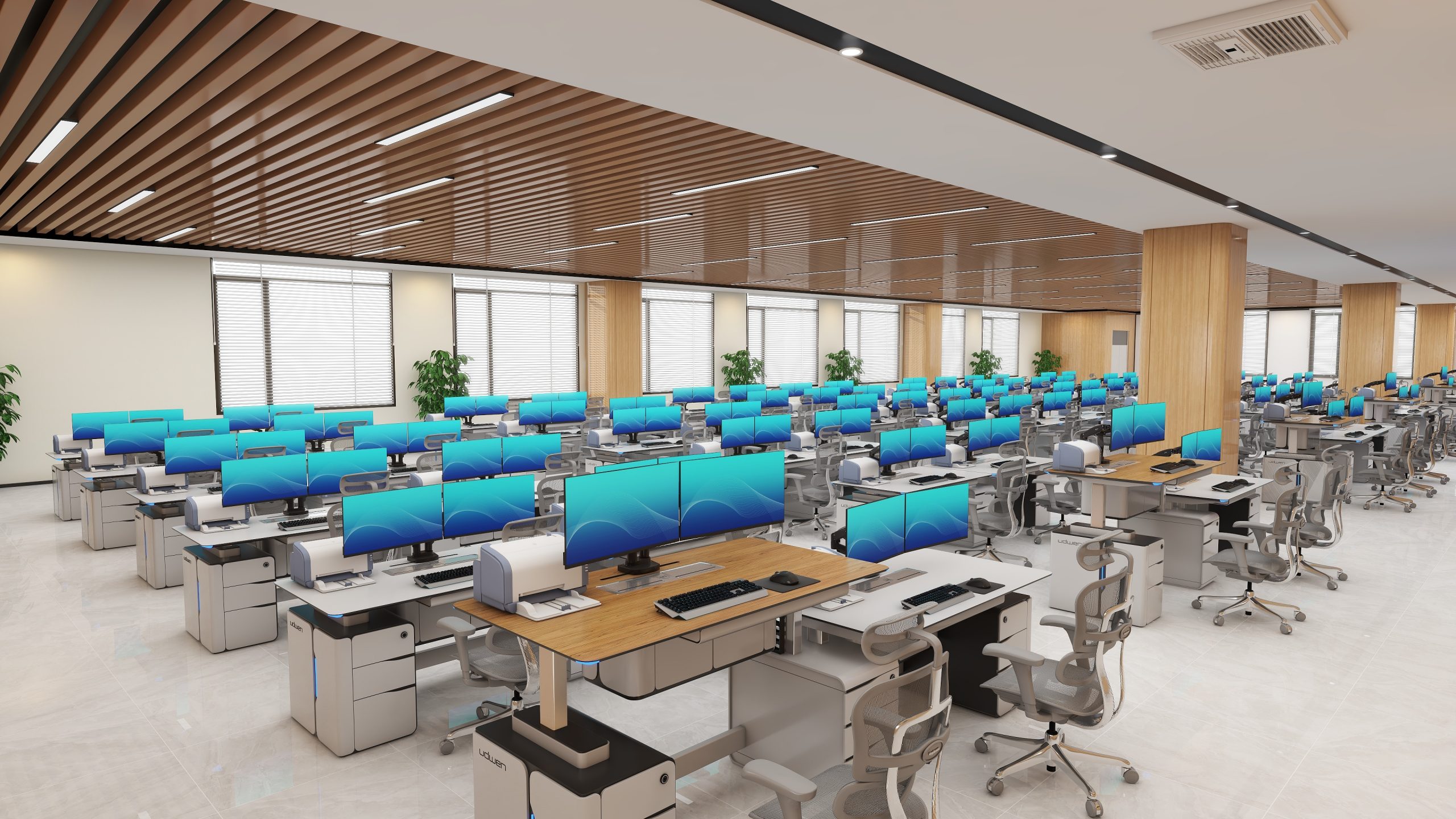Click me to visit our new website
Enhancing Productivity and Efficiency with Industrial Desks and Control Room Consoles
In modern industrial and operational settings, the importance of specialized workstations like industrial desks and control room consoles cannot be overstated. These workstations are designed to meet the specific needs of various industries, enhancing both productivity and efficiency. By integrating advanced features and ergonomic designs, industrial desks and control room consoles play a crucial role in optimizing work environments.
The Importance of Ergonomic Design
Ergonomics is a key factor in the design of industrial desks and control room consoles. An ergonomic design ensures that workstations are comfortable and reduce the risk of musculoskeletal disorders, which can be caused by prolonged periods of sitting or repetitive tasks. By prioritizing ergonomics, these workstations help improve employee well-being and productivity.
Adjustable Height and Work Surface
One of the standout features of industrial desks and control room consoles is the adjustable height and work surface. This flexibility allows workers to customize their workstations to their specific needs, whether they prefer to sit or stand while working. Adjustable work surfaces can also accommodate different tasks, from writing and drawing to using computers and other specialized equipment. This adaptability is essential for maintaining comfort and reducing strain during long work hours.
Integrated Cable Management
In a highly technical environment, managing cables and wires is critical to maintaining a tidy and efficient workspace. Integrated cable management systems in industrial desks and control room consoles help organize and conceal cables, preventing tangling and reducing the risk of accidents. These systems not only enhance the aesthetic appeal of the workspace but also contribute to a safer and more organized working environment.
Specialized Features for Control Room Consoles
Control room consoles are a vital component of many industrial and operational settings, particularly in industries such as manufacturing, energy, and telecommunications. These consoles are designed with specialized features to support the unique demands of control room environments.
Multiple Monitor Support
One of the primary features of control room consoles is their ability to support multiple monitors. In control rooms, operators often need to monitor various systems and data streams simultaneously. Consoles with multiple monitor support allow for a more comprehensive and efficient monitoring setup, enabling operators to quickly access and analyze information. This capability is essential for maintaining situational awareness and making informed decisions.
Customizable Layout Options
Another critical feature of control room consoles is their customizable layout options. Each control room has unique requirements, and the ability to customize the layout of consoles ensures that the workspace is tailored to the specific needs of the operators. Customizable layouts can include modular components, adjustable monitor mounts, and specialized storage solutions. These options provide flexibility and adaptability, allowing for an optimized work environment that can evolve with changing operational needs.
Applications in Industrial and Operational Settings
Industrial desks and control room consoles have a wide range of applications across various industries. In manufacturing, these workstations are used to oversee production lines, monitor equipment performance, and manage quality control processes. In the energy sector, control room consoles are essential for monitoring power grids, managing energy distribution, and ensuring the stability of critical infrastructure. Telecommunications operators rely on control room consoles to manage network operations, monitor communications systems, and coordinate emergency responses.
These workstations are also crucial in sectors such as transportation, where they are used to oversee traffic management systems, monitor public transit networks, and ensure the safety and efficiency of transportation infrastructure. In healthcare, industrial desks and control room consoles support the monitoring of medical equipment, management of patient data, and coordination of emergency services. The versatility and specialized features of these workstations make them indispensable in a wide range of industrial and operational settings.
Maximizing Efficiency and Productivity
The impact of industrial desks and control room consoles on efficiency and productivity is significant. By providing a well-organized, ergonomic, and adaptable workspace, these workstations enable employees to perform their tasks more efficiently and effectively. The integration of advanced features, such as adjustable heights, cable management, and multiple monitor support, further enhances productivity by streamlining workflows and reducing the time spent on non-essential tasks.
Impact on Employee Performance
A well-designed workstation can have a profound impact on employee performance. Ergonomic designs help reduce fatigue and discomfort, allowing employees to maintain focus and productivity throughout their shifts. The ability to customize workstations to individual needs also contributes to higher job satisfaction and motivation. When employees are comfortable and well-supported, they are more likely to perform at their best and contribute to the overall success of the organization.
Streamlining Task Execution
Industrial desks and control room consoles play a crucial role in streamlining task execution. With features like integrated cable management, multiple monitor support, and customizable layouts, these workstations help create an efficient and organized workspace. This organization reduces the time spent searching for tools and information, allowing employees to focus on their primary tasks. The result is a more efficient workflow, with tasks being completed more quickly and accurately.
In conclusion, industrial desks and control room consoles are essential components of modern industrial and operational settings. Their ergonomic designs, advanced features, and adaptability contribute significantly to enhancing productivity and efficiency. By providing a well-organized and comfortable workspace, these workstations support the performance and well-being of employees, ultimately driving the success of the organization.



0 Comments